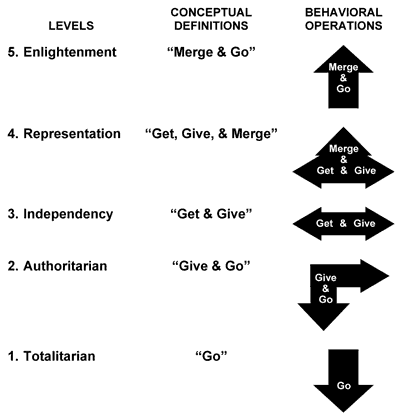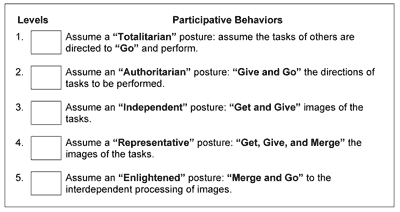The American Presidency:
3. Enlightened Citizenry
When Washington refused “The American Kingship,†he defined the presidency as a representative of “We the People,†the constitutionally-mandated policy-makers. This was the Constitution’s greatest vision: An Enlightened Citizenry.
Enlightened Citizenry reflects the levels of citizen participation within, between, and among governments. An enlightened citizenry is what transformed America from “dependent minions of colonial justice†to “constitutionally-mandated policy-makers of governance.â€
While empowered by the Constitution of 1789, it was not until 1870, after a great Civil War, that race, color, and conditions of servitude were eliminated as conditions of the right to vote (Amendment XV). Further incriminating, it was not until 1920 that sex was eliminated as a condition of the rights of citizens. To be sure, it was not until the second half of the 20th century—following World War II—that Americans began to understand the meaning of “We the People.†We have since led the movement for World Governance and World Justice. Indeed, the success of this movement is contingent upon the success of “The Great Experiment:†American Cultural Relating, Participative Governance, and Free Enterprise.
We may view the Participative Governance Scale in Table 2. Once again, the levels are developmental. Also, level 3, Independency, is the threshold learning experience that enables independence of direction. Below level 3, the authoritarian and totalitarian governance systems dominate. Above level 3, the enlightened and representative systems dominate as critical sources of empowering citizens.
At level 3, Independency, would-be participants share both democratic and authoritarian governance responses. This is illustrated by the behavioral operations of “Get and Give.†Each participant “gets†the images of others before “giving†his or her own image.
At level 4, Representation, participants share images in order to “merge†new images. The “merged†images center around the definition of direct participation in democracy “as the level most facilitative of participative governance.†The behavioral operations of “Get, Give and Merge†serve to maximize meeting producers’ values and governance requirements.
Table 2. Participative Governance Scale

At level 5, Enlightened Citizenry, the citizens have already “merged†images of participative governance before “going†to interdependent processing for generating new missions for governance and justice. The behavioral operations of “Merge and Go†illustrate the enlightened interdependency.
Below level 3, the enterprise is constructed selectively by authoritarianism or totally by totalitarianism. At level 2, Authoritarian, orders are “given†in a discriminatory manner for the areas to be controlled. There is no “getting†of images as the “Give and Go†behavioral operations dominate.
At level 1, Totalitarian, there is implied coverage of the totality of the human experience as communicated only by the direction, “Go!â€
Again, you may rate yourself or others on Participative Governance. As a helper or leader, rate yourself or others in the following Participative Behaviors:
Ratings of Participative Governance

Once again, you may be surprised or shocked at the low levels of Participative Behaviors. For example, if a representative does not “get†your image on an issue, then he or she is not even minimally effective in that role.
Remember, the function of Participative Governance is Participation within, between, and among the citizens of the nation, its states, and local governance.
Ultimately, enlightened citizenry is a necessary condition of all civilized governance. It ensures that generative initiatives drive the balanced governmental process: legislative, executive, judicial. Again, at the highest levels, We the People are positioned as policy-makers in the process of governance.
In short, we get what we earn by the initiatives that we generate through interdependent processing as Enlightened Citizens.
